With a drag coefficient of 0.20, Mercedes-Benz claims its upcoming luxury electric car, the EQS, is the world’s most aerodynamically efficient production car. As you’ll soon find out that’s a claim that can only be made when accompanied by a collection of caveats, but it has a strong chance of outselling the small-volume cars to hold the outright title.
The EQS (pictured below) will be Mercedes’ flagship electric car, effectively an electric equivalent to the S-class, and will even be built in the same factory. But it sits on a purpose-built platform, and without the need to package a combustion drivetrain, the company has found the freedom to maximise the car’s aerodynamics – hence the headline figure.

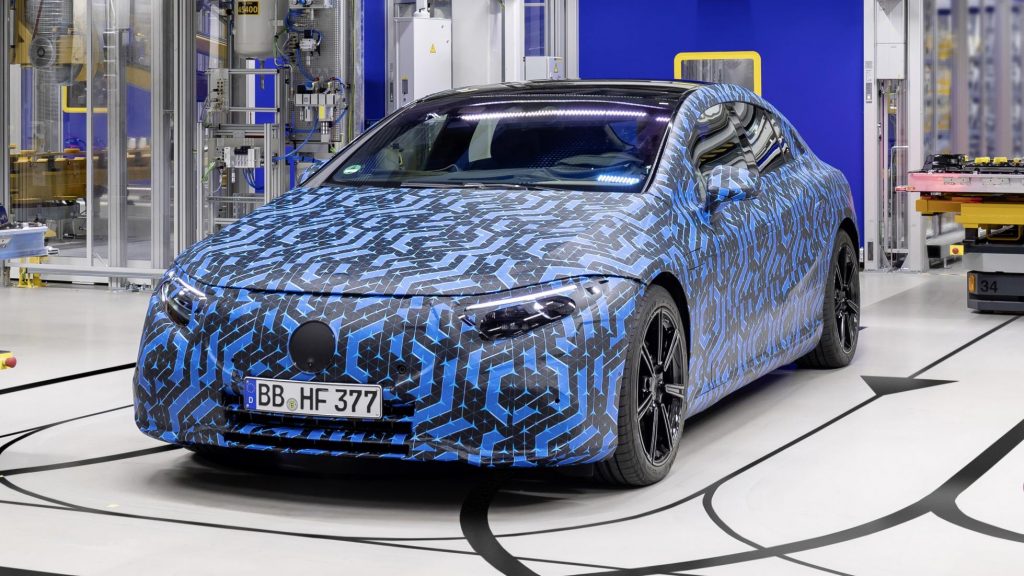
The history of aerodynamic production cars is a fascinating one though, and below we’ve explored ten models to make waves (or should that be make minimal waves?) in aerodynamic progress, and listed their coefficient of drag value (Cd).
1947 Saab 92 – Cd 0.30
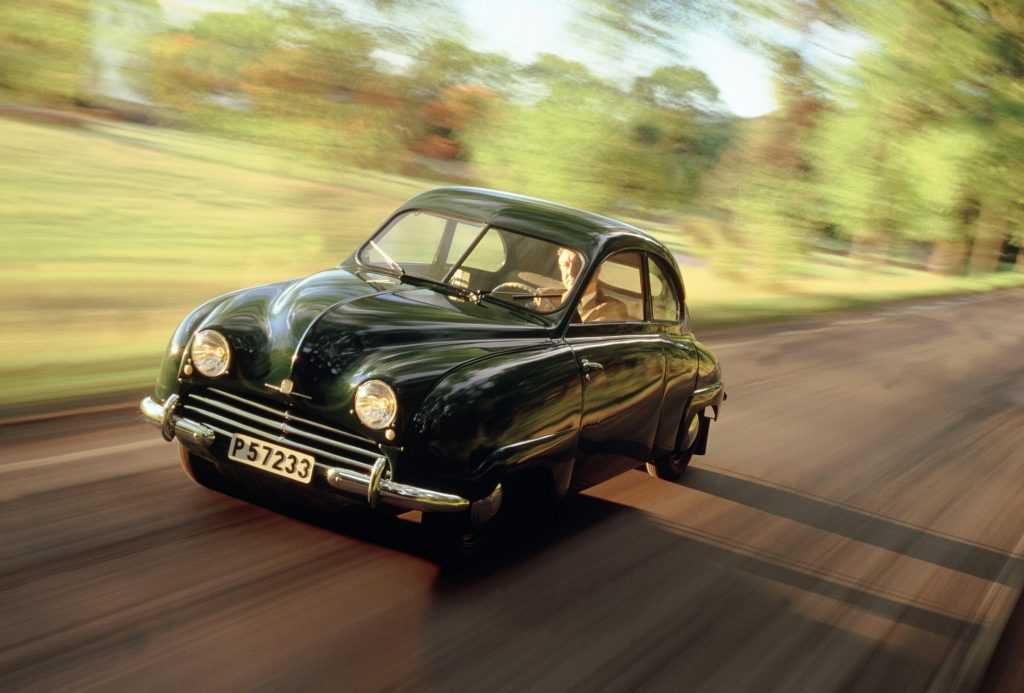
If ever you needed evidence that early Saabs were built to the same principle as the company’s aircraft, you need look no further than the company’s very first production car, the Saab 92 of 1949.
With a drag coefficient of 0.30, its ability to efficiently punch a hole through the air remains better than that of some modern production cars. Its shape mixes elegant 1940s streamlining ideals with practical proportions that allowed its successor, the 96, to persist until as late as 1980.
While not privy to the kind of technology modern firms have to improve their cars’ aero efficiency, Saab’s engineers clearly pulled a trick or two from the aeronautical playbook. The 92’s flanks were stamped from a single piece of sheet metal, the headlights were flush with the bodywork, and the roofline features that familiar rake of later aero specials. For the 1940s, it was truly remarkable.
1962 Alfa Romeo Giulia – Cd 0.34
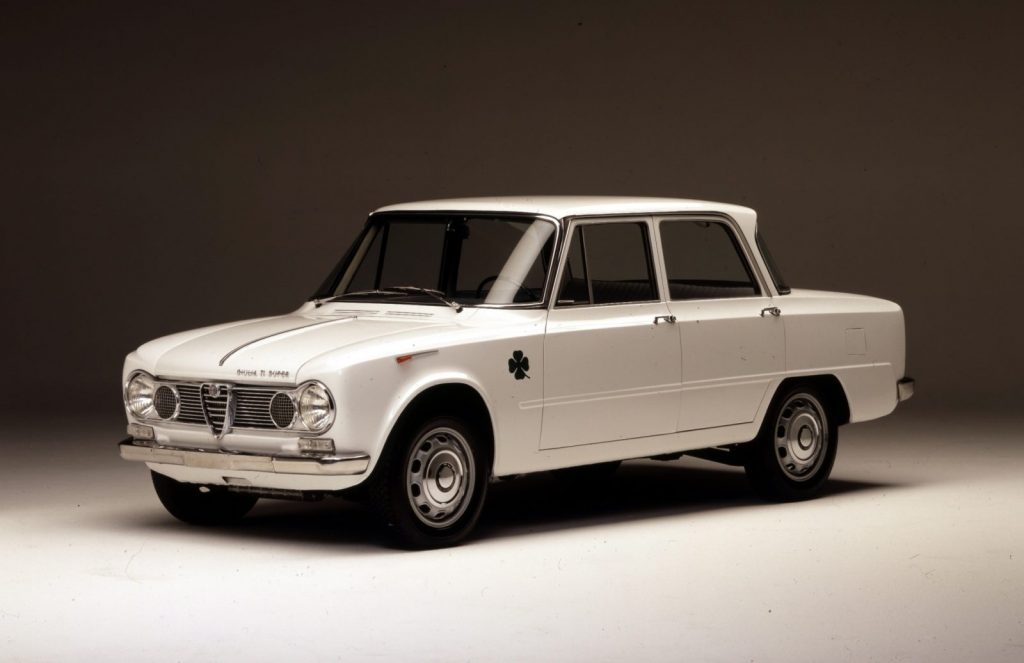
The most aerodynamically-efficient shape for a vehicle is, in theory, a teardrop. A smooth shape minimises drag and the profile, if correctly configured, keeps airflow attached to the surface rather than breaking free and causing turbulence.
It’s a little impractical though, since you’d need to make every car several feet longer to finish off the teardrop shape. In the 1930s though, an engineer named Wunibald Kamm, built upon the work of several other engineers to demonstrate that cutting the tail off sharply could be similarly efficient, quickly breaking airflow and reducing the potential for turbulence.
Having demonstrated its efficacy in racing, Alfa Romeo applied it to cars too, including 1962’s Giulia saloon. It didn’t look much like a teardrop – in fact, it was surprisingly boxy. But with the aid of a wind tunnel, cutting down on drag from superfluous details, careful shaping of the surfaces, a curved edge to the base of the windscreen and of course, a “Kamm tail”, the Giulia was the sleekest saloon of its era, with a Cd of just 0.34.
1970 Citroën GS – Cd 0.31

1970’s Citroën GS was another proponent of the Kamm tail, but with nearly a decade of aerodynamic advancement over Alfa’s Giulia – and no small quantity of Citroën individualism – the GS of 1970 was another aerodynamic star, with a coefficient of drag of just 0.31.
1955’s Citroën DS was relatively sleek for its era at 0.36, but the GS, designed to slot in below the DS, was a considerable advancement. Much like the Giulia simplicity was key, with virtually nothing to disturb airflow along its flanks or over the top of the car, while a gently sloping roof and cut-off tail allowed air to break free as efficiently as possible.
Of course, the GS had plenty of other unique attributes, so its aero efficiency is often forgotten. With an aircooled flat-four engine, self-levelling hydropneumatic suspension and – briefly – the option of a Wankel rotary engine, its low drag was almost secondary.
1982 Audi 100 – Cd 0.30
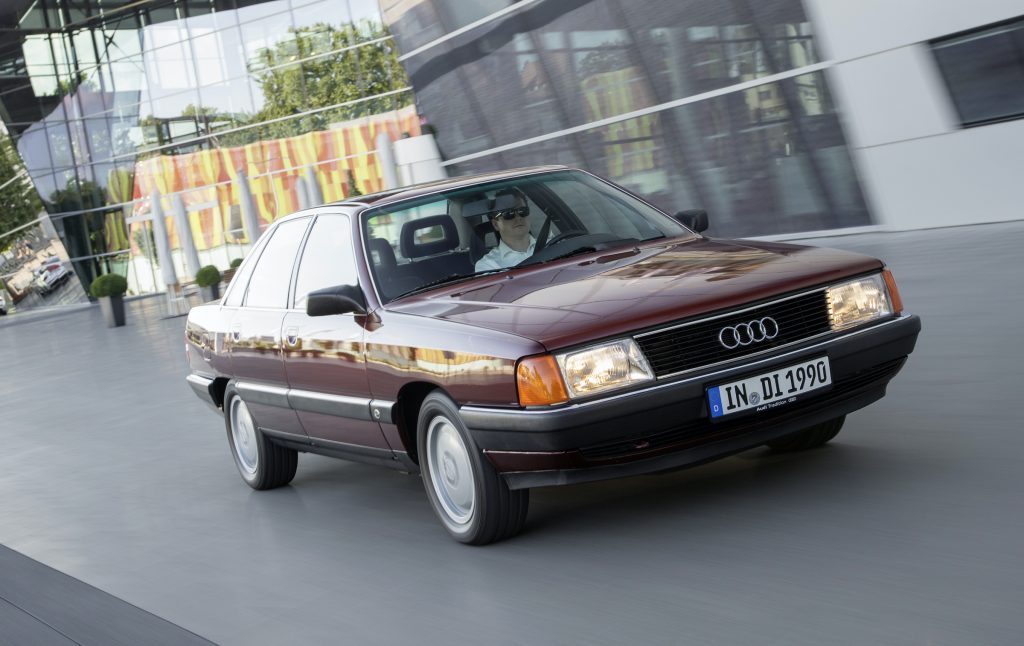
Aerodynamic cars had in the past been overtly streamlined, with tapering profiles, and organically smooth curves, but the third-generation Audi 100 of 1982 took a predictably Ingolstadt approach to the art of slipping through the air: science.
On the face of it, the 100 doesn’t look particularly sleek, but compared to the previous 100 there were several obvious differences. Bumpers, body mouldings and window glass were now flush to the body, reducing possible areas of turbulence. Windscreen wipers were partially hidden behind the trailing edge of the bonnet, and base models got clean, flush-fitting wheel trims to minimise turbulence.
A Cd of 0.30 doesn’t look spectacular today – a modern Audi A4 gets as low as 0.23. But compared to other large family cars, it was several steps ahead. Ford’s Sierra, itself a big improvement over the old Cortina, was only 0.34. And Audi’s approach, where conventional cars can be as aero-efficient as more obviously sleek models, is still used to good effect today.
1989 Opel/Vauxhall Calibra – Cd 0.26
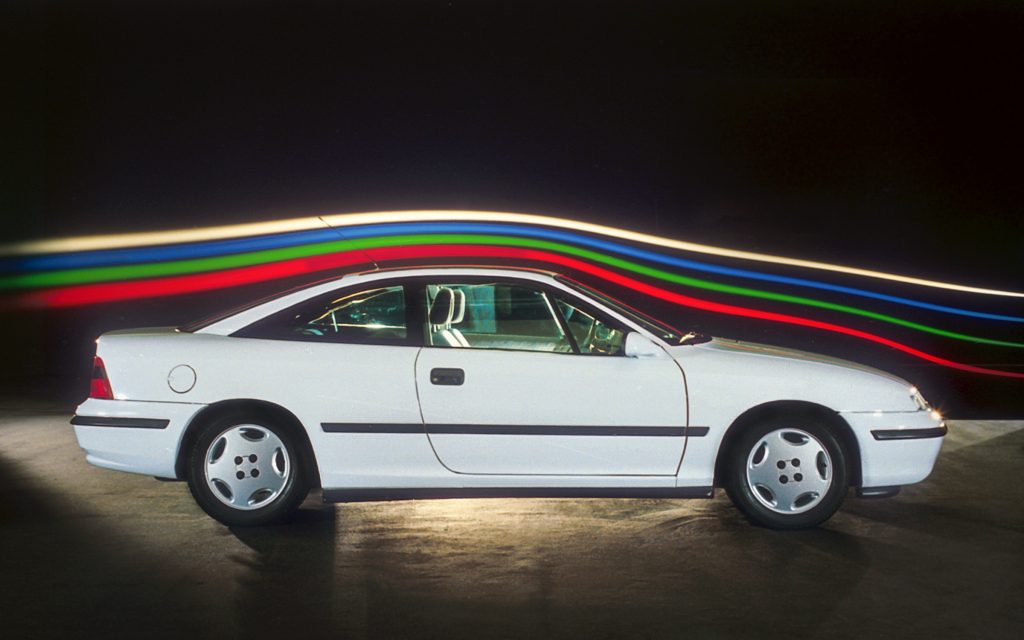
The Opel and Vauxhall Calibra ushered in a new, cleaner styling trend for the 90s when it made its debut in 1989. It was, and still is, a rather fine looking vehicle – minimal in ornamentation, well-proportioned, and as it turns out, very aerodynamic indeed.
The Calibra in fact is one of those cars you could guess was aerodynamic just from looking at it. In profile it’s low and sleek, and at the front its grille openings appear no larger than is absolutely necessary, banishing the 80s trend for flat fronts and grilles occupying the full width between a car’s headlights.
Its surfaces were tidy too – check out the flush glass and door handles – and contributed to a drag coefficient of just 0.26. Some modern coupes barely beat that figure today. More performance-orientated versions weren’t quite so slippery, and Cavalier underpinnings rendered it average to drive, but the Calibra always had sleek style on its side.
1996 General Motors EV1 – Cd 0.19
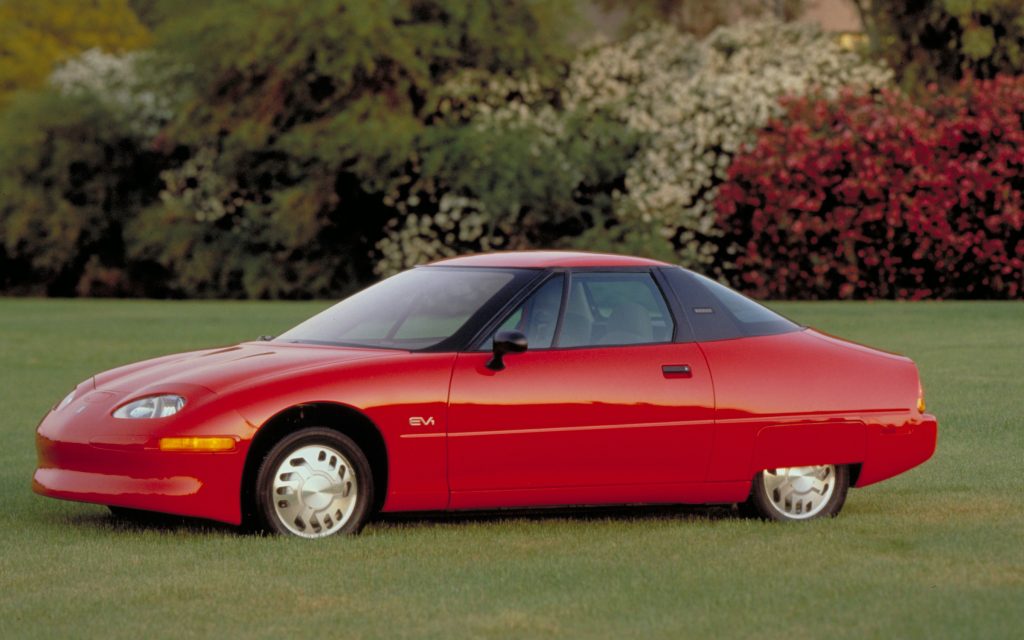
Battery technology in the mid-1990s wasn’t quite up to the level it is today, so early electric cars had to work hard for their range. Or simply work clever, as General Motors did with the EV1 in 1996.
As with the Honda Insight that followed a few years later, the EV1 had just two seats, which meant the roofline could be tailored without reducing passenger space. The electric powertrain meant no need for drag-creating cooling ducts at the front, the rear wheels were covered by spats, and the tail was sharply cut off in the same Kamm style as that 1960s Alfa Giulia.
Powered first by lead-acid batteries and later by nickel-metal hydride cells (which nearly doubled the range to 105 miles), the EV1 would have struggled for a usable range if not for being the most aerodynamic production car ever made. Gallingly, GM killed the project in the early 2000s – very literally, by reclaiming the leased cars and crushing them.
1999 Honda Insight – Cd 0.25
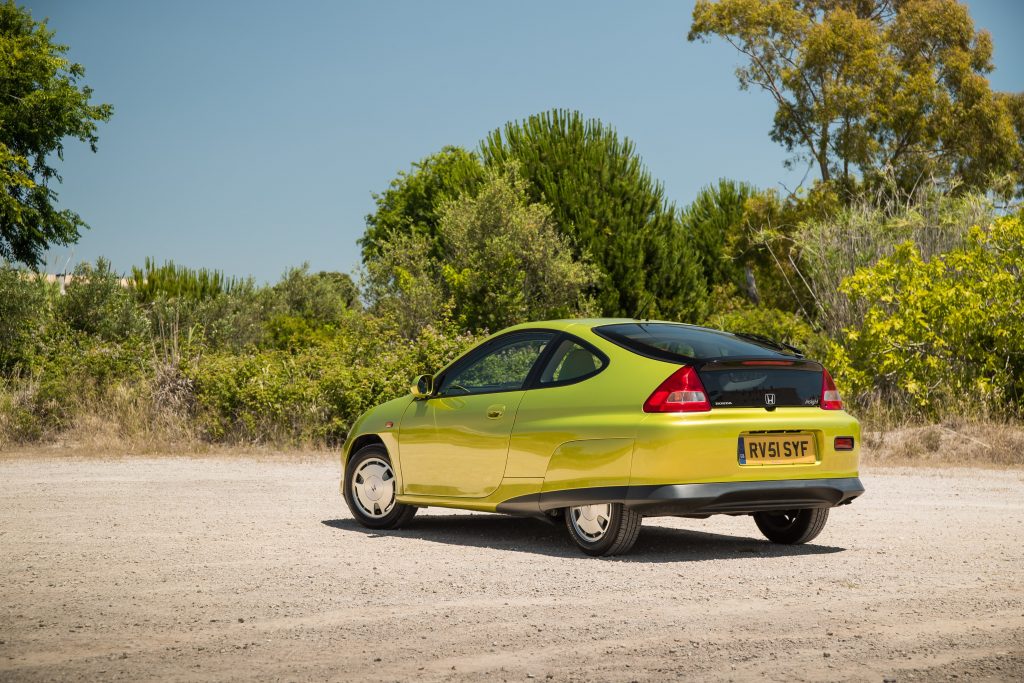
Honda’s first hybrid might look like a sly copy of the EV1 were it not effectively a reimagining of the CR-X that had first launched in 1984. With clean lines, a roofline perfectly angled to keep airflow attached and a sharply cut-off tail the CR-X already achieved a Cd of 0.32, but the Insight pushed this even further.
A decade and a half of aero knowledge smoothed out the Insight’s most obvious surfaces, but as well as tapering in profile, Honda tapered the Insight in plan view too, its rear track 110mm narrower than the front. The rear wheels wore covers too, while much of the underside was clad for minimum resistance.
That allowed for a drag coefficient well below that of any similarly-sized car, though without the need (or space) for rear seats the Insight used this to its advantage. With a tiny frontal area too, the Insight’s aero worked with both its light weight (850kg) and efficient hybrid powertrain to make it one of the world’s most fuel-efficient cars.
1999 Audi A2 – Cd 0.28
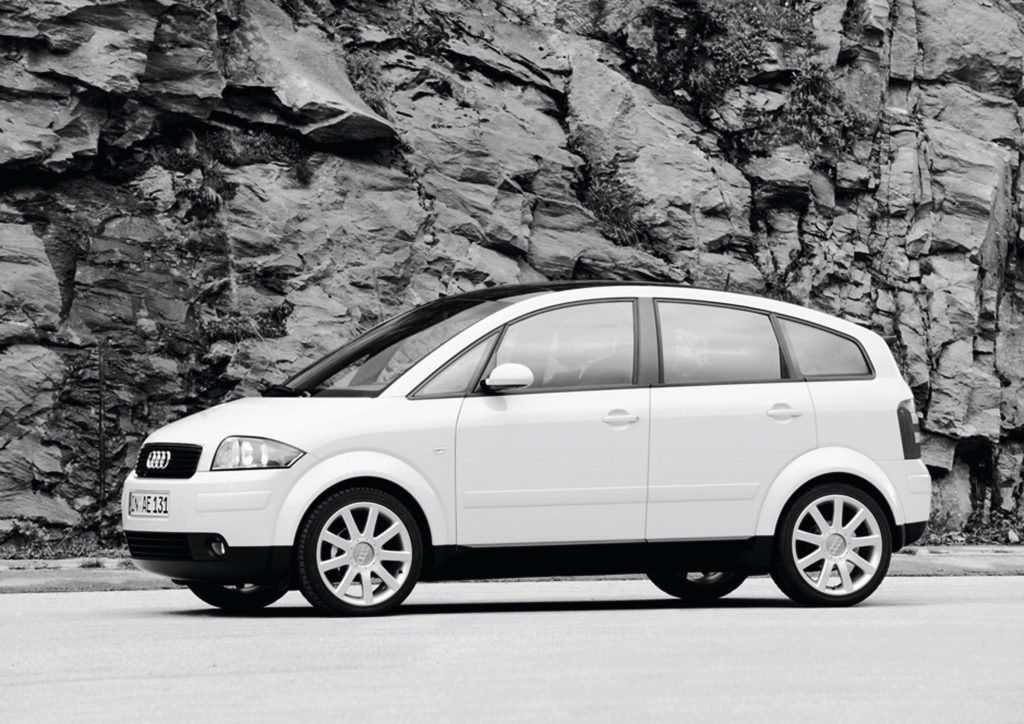
If the Insight showed what was possible by taking things to the extremes, Audi demonstrated, much as it did with the 100 back in the early 1980s, that with clever design you could significantly reduce drag even with the need to package passengers and luggage.
It’s become cliched to call the Audi A2 “ahead of its time”, but there’s really no other way to spin it. Debuting the same year as the Insight it too used aluminium construction, but unlike the Honda there was comfortable space for four people. It also predated the current trend towards premium – Audi has long been a premium brand, but aside from the Mercedes A-class, few others brought high-end quality to the low end of the market.
Its aerodynamics were down to clever surfacing and thoughtful details. That all-important tapering roofline was present and correct (with a small spoiler to reduce lift), while at the front the “grille” was actually a smooth panel, which also flipped down to allow drivers to top up the oil and screenwash.
2013 Volkswagen XL1 – Cd 0.19
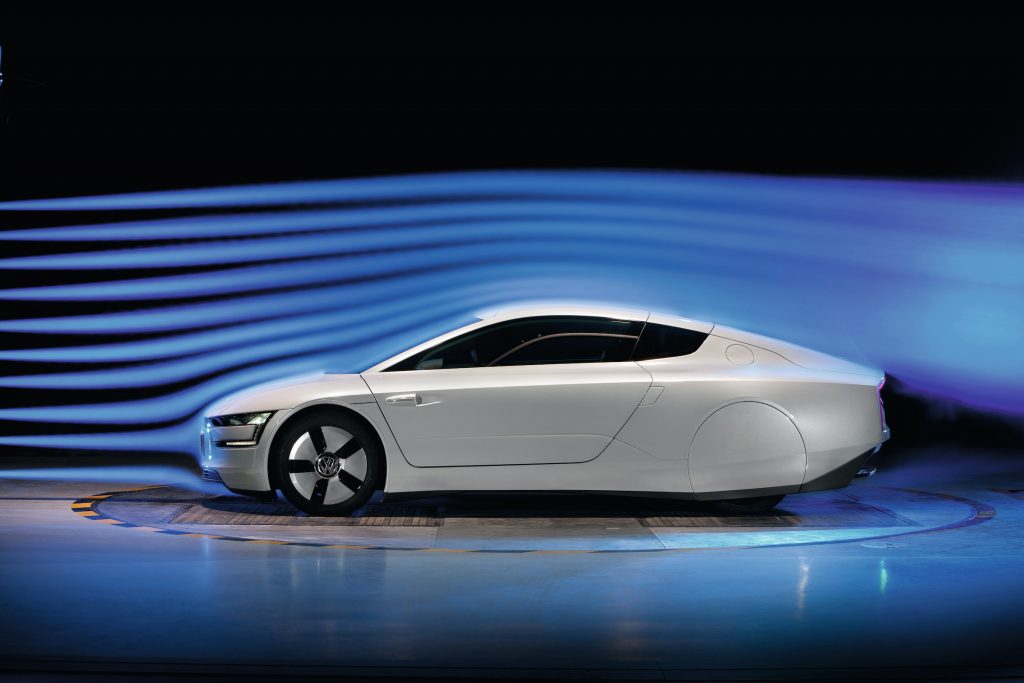
No other production car has enjoyed such single-minded focus towards fuel efficiency as the Volkswagen XL1, launched in 2013. The Honda Insight got close, but if the Honda can be likened to the S2000 sports car it shared a factory with, the XL1 is to economy cars as the Bugatti Veyron was to supercars.
That includes the price, which was just shy of £100,000 in the UK. A bit high for something with an 800cc, two-cylinder diesel you might think, even considering hybrid assistance, but few cars even at that price could boast a full carbonfibre tub – or a drag coefficient of 0.19.
That makes it to this day the most aerodynamic production car ever made – if not built in the same volumes as the new Mercedes EQS – and while its combined economy figure of 313mpg relied on its 31-mile electric range, testers still returned figures in the high hundreds in real-world driving.
2021 Tesla Model S – Cd 0.208
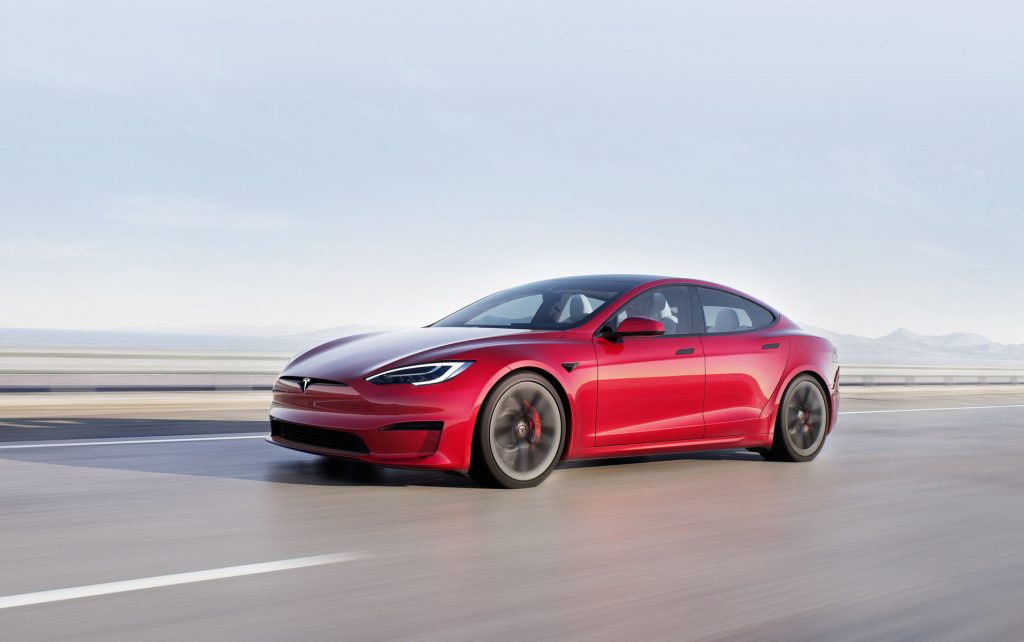
When the Model S debuted in 2012 it did so with a drag coefficient of 0.24. Not bad at all, for while its substantial size meant a large frontal area, the low drag actually made it more slippery than the pill-shaped Toyota Prius.
But Tesla has been working hard over the years, and the most recent iteration of the Model S is, if the company’s website is to be believed, behind only to the Volkswagen XL1, GM EV1, and the new Mercedes in terms of production car drag.
The Tesla’s size actually counts in its favour here, because a long body means fewer compromises when squeezing passengers into as aerodynamic a shape as possible. But Tesla has been clever in other areas, refining the car’s shape and maximising the benefits of things like flush doorhandles and a completely flat floor. We’d put money on Tesla carrying out just a few more tweaks to undercut the new Mercedes.
Read more
Future Classic: Honda Insight
The Super S-Class: The Mercedes-Benz 450 SEL 6.9
11 alternatives to the Jaguar E-type










Another car with an impressive drag coefficient (0.31) considering it was a short, stubby car, was the Lancia Y10 of 1985, 14 years before the A2.
Also from the early 80’s was the Renault 25 TS which had the drag coefficient of 0.28.
By the way, the photo of the Audi 100 shows the C4 model of 1990-1994.
Thanks for the correction on the Audi – now fixed.
re slippery cars. You missed out the type14 Lotus Elite 1957-63 Drag coefficient 0.29 plus a very small frontal area puts it among the top slippery cars.
Lotus Europa 0.29 – not bad for a car designed in 1964!!
I think the 1949 Palmer designed Jowett Javelin deserved a place on the top ten for its aerodynamic design
Also the Vauxhall Carlton at 0.28 and it used its deign to clean the rear lights with the slipstream!
Plymouth Superbird .31, Dodge Daytona .29
Alfa Romeo Giulietta Sprint Speciale of 1957.
CD of .28 and a production car from 1957
I think the title holder until the Calibra 32 years later
Opel/Vauxhall evolution in the 80’s was very regular :
1984 Kadett E : 0,30
1986 Omega A : 0,28
1988 Vectra A : 0,27
and finally 1989 : Calibra 0,26
Most impressive was the Panhard Dyna Z in 1954 : mass product 4 doors sedan with 0,26 Cx and aluminium body.
Interestingly, The Peugeot 309 Profil from 1985 had a 0,29 drag coefficient with its boxy style
Rumpelt Tropfenwagen, Germany 1921, cw 0,28
You’ve missed the best of all – the Panhard CD with a coefficient of just 0.12 – and 140 mph from just 848cc.
Mercedes w124 series. DE down to .26 in the 80’s. Held the top spot, use of body shaping plus ubderbody deflector panels…darn…missed it
Thanks for having remembered the Giulia of the 60”s indeed I have a book : Giulia, l’ha disegnata il vento’ which I liked since childhood. Designed by the wind
Renault 25 0,28 1984
Peugeot 405 CX 0.30
Renault 19 till 1988 CW-Wert 0.30
Fiat 8001 Turbina 1954 CD 0.14
https://en.m.wikipedia.org/wiki/Fiat_Turbina
Aptera is scheduled for production by the end of 2021. This is a 2 place vehicle with a Cd of 0.13.
300ZX .30
There were some cars just before WW2 that had outstanding drag coefficient, Talbot Lago, Bugatti Atlantic, Rolls Royce Jonckheere, Tatra 77 etc. Looking at them, one does think they knew a thing about making cars move through air efficiently.
I’m surprised the citroen cx wasn’t mentioned.
Especially as cx is CD in French.
I have a aptera.us on order for later this year 2021. It is a CD .13 . It is a 2 seater with 400 miles EV range on 1 charge. It is so efficient it even has 700 watts of solar pv forc20 to 50 miles a day on Sunshine.
Hi Jim. If that’s so, keep us posted. We’d be interested to follow your journey with the Aptera.
Thanks, James Mills (Editor)
Czechoslovak Tatra 77A (1935) – Cx 0,21. The lowest at the time.
Burney Streamline. Chrysler Airflow. Maybach Zeppelin. Costin Amigo.
Very interesting overview!
It seems that every car below 0.20 has the rear wheels covered (although the 2021 Tesla model S almost gets there with a normal design).
We recently did a video on the Porsche Taycan’s aerodynamic features (it has a claimed Cd of 0.22) – I hope it helps understanding car aerodynamics:
https://www.youtube.com/watch?v=K2jgsgihZ_w
I’m sure the Vauxhall Carlton and Omega were in the 0.3 region back in the 80s/90s?
Virtually every car ad mentioned ’cd’ figures back in the day, rarely see it now!
I’m going to buy a 07 s550 nice car what would improve the arodinmickes on it
I highly recommend Julian Edgar’s new book, A Century Of Car Aerodynamics, for a lot more information on this subject.
Costin Amigo
Droop Snoot Firenza (HPF)
Messerschmitts with tandem seating for low frontal area.
The Calibra was a bit of a cheeky claim though… it was only the lowest spec 16v that had the lower drag co-efficient due to its lack of boot spoiler… The faster versions all NEEDED the boot spoiler to stop them getting unstable due to the rear lifting at speed…
Citroen sm 0.26 has a good drag coefficient
The lower spec 1990 Calibra was fitted with a 8valve C20NE engine not the 16v… true that it was only this 8v version only that could hold claim to fame due to a closed top grill, flush wheels and narrow tyre difference, the others being 0.28/0.29. The spoiler fact… it was a optional extra to any Calibra model from the start (they did 22 different types and 5 engine choices through the years), the first one to be fitted with a standard spoiler was to the the DTM version in 1995 and was designed more for looks than down force. Even the 1992 2.0 Turbo 4×4 (152 mph) didn’t have a boot spoiler until three years later. If it was a problem I think they would have done something before this. Besides which the rear under-tray helped at speed to keep it pinned at the rear, a feature fitted on all Calibra.
At the other end of the scale, The Volvo 740 has the same drag coefficient has a house brick.
Rover 220 coupe (Tomcat)
Very much the same shape as a Vauxhall Calibra,I was lucky enough to own a 220 a while ago.
Citroen XM 1989 had between 0.30 & 0.28 depending on model, this article seems seriously flawed
Hello, could you point out the flaws so that we might change them? Or are you just referring to us not including the particular car you’d like to have seen included?
1934. Tatra T77. Czech. 0.2455. Less than the SAAB pictured from 13 years later. Not the only thing revolutionary about it.
The Mitsubishi Cordia had cd of just over .30 in the early eighties, while being a practical hatchback with merits none of these had : Mitsubishi toughness and reliability.
The ford Sierra had a Cd of 34 best in it’s class back in 1982 and the X4i came in with a Cd of 32
Hyundai Elantra 2017 Has Cd of 0.27 which very nice for gas mileage. Constant 78 with three people, three case of water bottles AC on Phoenix to Tucson 42 mpg. Lower speeds like constant 55 mph over hour run yield 55plus mpg. Many new cars have great Cd. Now
The Saab was remarkable in other ways. Because it had a two-stroke engine, which would have been rough on overrun, the engine disengaged from the drive train and it free-wheeled when one removed one’s foot from the accelerator. This made its successor the Saab 95 a very successful rally car as it could be driven with one foot on the accelerator and one on the brake making setting up slides easier
Vauxhall Ampera / Chevy volt ,1st gen Nissan Leaf or original Audi TT got to be up there as well
The Calibra Cd of 0.26 was only for the base model 1.6L CIH. All the good ones, Turbo, V6, 4WD had a Cd of 0.3. The 1.6 had half a radiator and a blanking panel, the others have a full width radiator. There were other differences to glass as well.
Renault Alpine GTA cda 0.28
The giveaway is in the word “coefficient”. This is not the same as total drag, and favours longer cars.
In terms of newer production cars, the BMW i8 scores 0.26
There’s this weird 90’s van called Chevrolet APV which has a drag coefficient of 0.32, which is quite good for a van of that time
Honda Civic Hybrid had CD :0.27 and is a fraction of the price of absolutely waste of space this Mercedes electric car that has Tesla battery as they can’t even make their own.
Have you considered the Matra Murena – 1981 – 1984 with a cd of 0.32?
Has anyone done aerodynamic research on 1997-2004 pontiac grand prix? Or at least have prints?
Citroen DS20 .38 and SM .26
They were also self leveling so load made no difference to drag.
Matra Murena.cd of 0.328
Reasonable figure for a 1980’s vehicle from a small manufacturer. Also had a hot dipped fully galvanised chassis, ahead of its time.!
1974 Lotus Elite 0.30
Nissan GTR 0.26
Impressive figures indeed as advancements are being made in all things related to motor vehicles. With regard to the Audi models mentioned, one needs to go back to the VW/Audi takeover of the NSU company to inherit their Ro80 of 1967. It’s CD of 0.355 was exceptional for a 4door production saloon car at that time, all pulled along by its 1litre Wankel engine to an astonishing 112mph.
Interesting that the article on the Tesla S mentions frontal area as being something that the designers had to deal with when achieving a low CD. The drag is calculated from the CD x the frontal area….
2010-2019. KIA VENGA / HYUNDAI ix20 has a Co: 0.31
It goes back a lot further than 1947! Alfa’s “Aerodinamica”, was 1914!
I believe the Rover 800 series was around 0.3, quite good for a big car.
Hyundai Ioniq – 0.24. Still pretty much the most economic EV out there. Shame others haven’t tried to better it and keep the price reasonable.
Toyota tarago 0.31
Better than a porsche 911.
Pretty good for a people mover and that sweet na v6👌
VW Lupo 3L 0.29